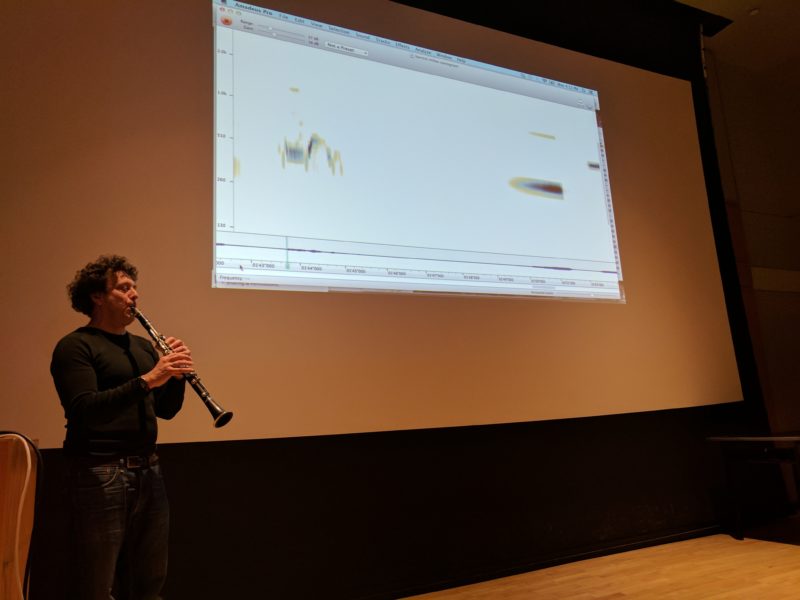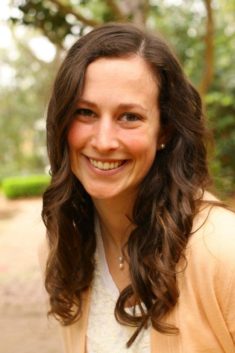This is the first of two blog posts about the English Student Association conference The Vibrating World; this post is by guest blogger Christina Katopodis, a doctoral candidate in English at The Graduate Center, CUNY.
On Friday, March 31, graduate students came together for a day of panels, performances, lectures, and vibrant discussions in the English Student Association’s conference of the year, The Vibrating World: Soundscapes and Undersongs. Organized by seven students in the Ph.D. Program in English at The Graduate Center, CUNY, the conference inspired a day of critical listening as attendees shared with one another where they find music, discussed the delights and horrors of sonic vibrations, and brought together multiple disciplines with innovative papers and performances.

Anna Zeemont presenting to students at "The Vibrating World" conference, photo by Christina Katopodis.
After convening over bagels and coffee, in the panel “Silence, Sound & Liberation,” Anna Zeemont presented on silence as a form of literacy and a strategy for survival, while medievalist Jennifer Alberghini teased out the passive construction of the female student in “The Tale of Apollonius of Tyre.” Concluding with Stefano Morello’s historicization of Punkvoter subculture, the panel’s focus on the politics of sound kicked off a discussion that would be picked up in a later panel on “Sonic Warfare.” Meanwhile in “Acoustic Environments,” Sean Nolan echolocated his audience in the pastoral soundscape of Bloomfield’s understudied poem, “The Farmer’s Boy.” Concluding the discussion on sonic environments, Paul Hebert analyzed the hierarchy of sounds on the Pequod in Melville’s Moby-Dick, pointing out that when sounds get unmoored from reality they have the potential to become horrific. Read the full program here.
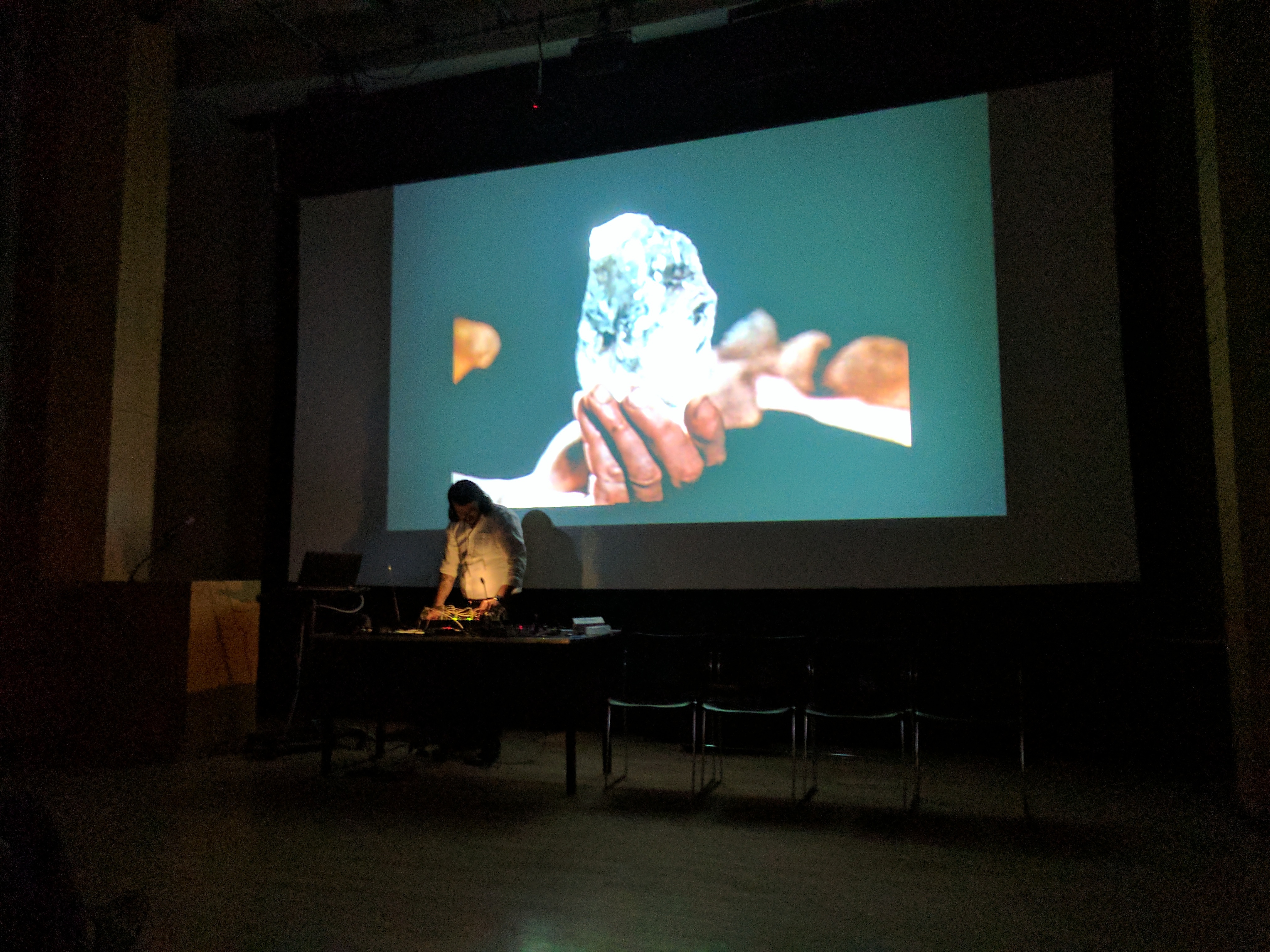
Ryan LaLiberty performing at "The Vibrating World" conference, photo by Christina Katopodis
In Session II, Ryan LaLiberty took the stage at the Segal Theatre with his performance, “Long Duration/Short Device,” emphasizing the history of the synthesizer as it relates to radio-influenced signal processing techniques. In a dark theater at a table outfitted with a modular synthesizer and handmade radios, a dim light illuminated LaLiberty’s movements while a large projector above pulsed with found footage displaying textual and visual invocations of the science and historical development of early radio. His performance captured the non-linear narrative of sound technologies merging together and modulating each other. In the discussion that followed, LaLiberty described himself as a “bigger antenna for the transmitter” in his set up.
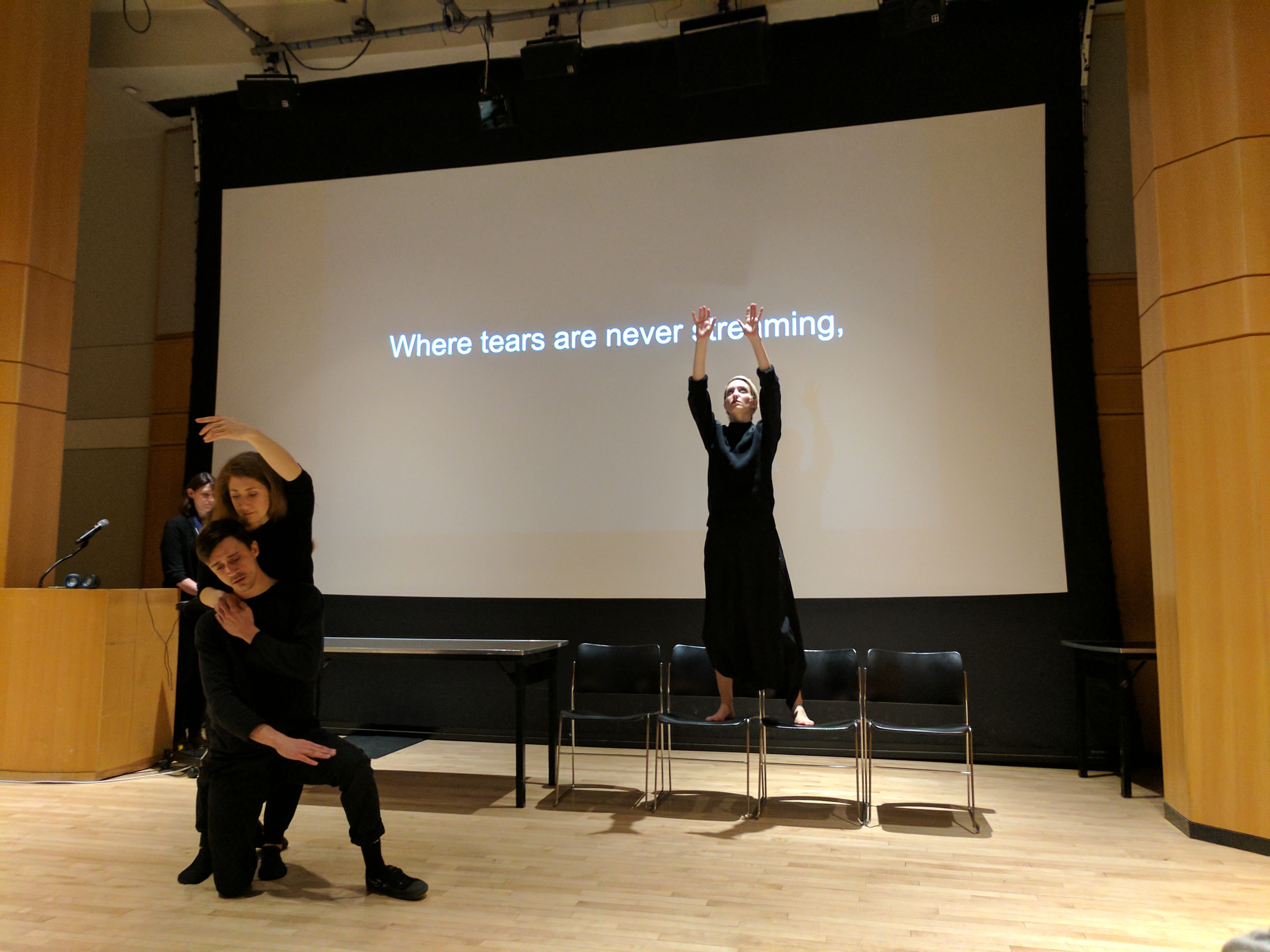
Jojo Karlin, Blake Habermann, and Oakley Boycott performing "Sound Off" at "The Vibrating World" conference, photo by Christina Katopodis.
Silence then took the foreground in Jojo Karlin and Mary Birnbaum’s “Sound Off,” a silent performance of the Act II Finale of Giuseppe Verdi’s Aida. Karlin, with Blake Habermann and Oakley Boycott, began with a low hum that made the silence that followed all the more beautiful and powerful. Afterward, performers talked about how compositions are often made without bodies in the room, calling attention to who wasn’t speaking in their performance. When asked about how they rehearsed without sound, Boycott said, “good Opera makes you see the music,” and Birnbaum pointed to the motions that cued each performer. Karlin emphasized that “leaning” on the sound of humming made the silence of the performance possible.
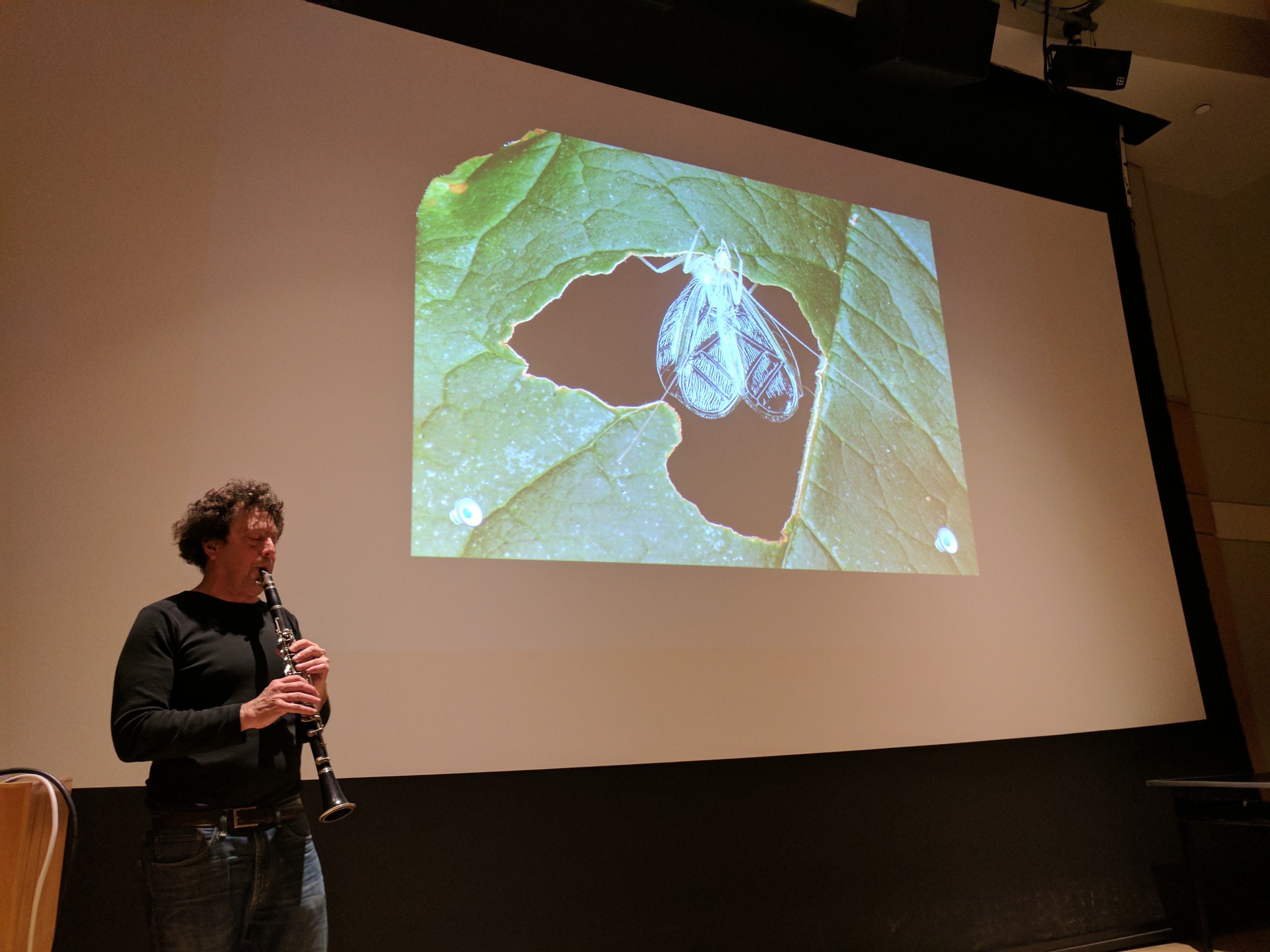
David Rothenberg playing clarinet during presentation at "The Vibrating World" conference, photo by Christina Katopodis.
David Rothenberg, Distinguished Professor of Music and Philosophy at NJIT, began the afternoon with his keynote lecture and performance on making music with birds, whales, and cicadas. Rothenberg introduced the audience to his duet with a white crested laughing thrush in Pittsburgh and then slowed down the recordings of birds to make their songs lower and more accessible to human ears, playing his clarinet with the recordings. Illustrating the patterns and organizations of bird and whale songs, Rothenberg pointed out that scientists weren’t as interested in bird song until they could visualize their sounds. Taking a note from Charles Darwin, he discussed the intersections of sexual selection and aesthetic taste in evolution, echoing several papers from the morning panels and teaching an attentive audience how to listen closely to the nonhuman world.
To read more about the events of the day, stay tuned for the next blog post in this two-part series by Kaitlin Mondello, a doctoral candidate in English at The Graduate Center, CUNY.
